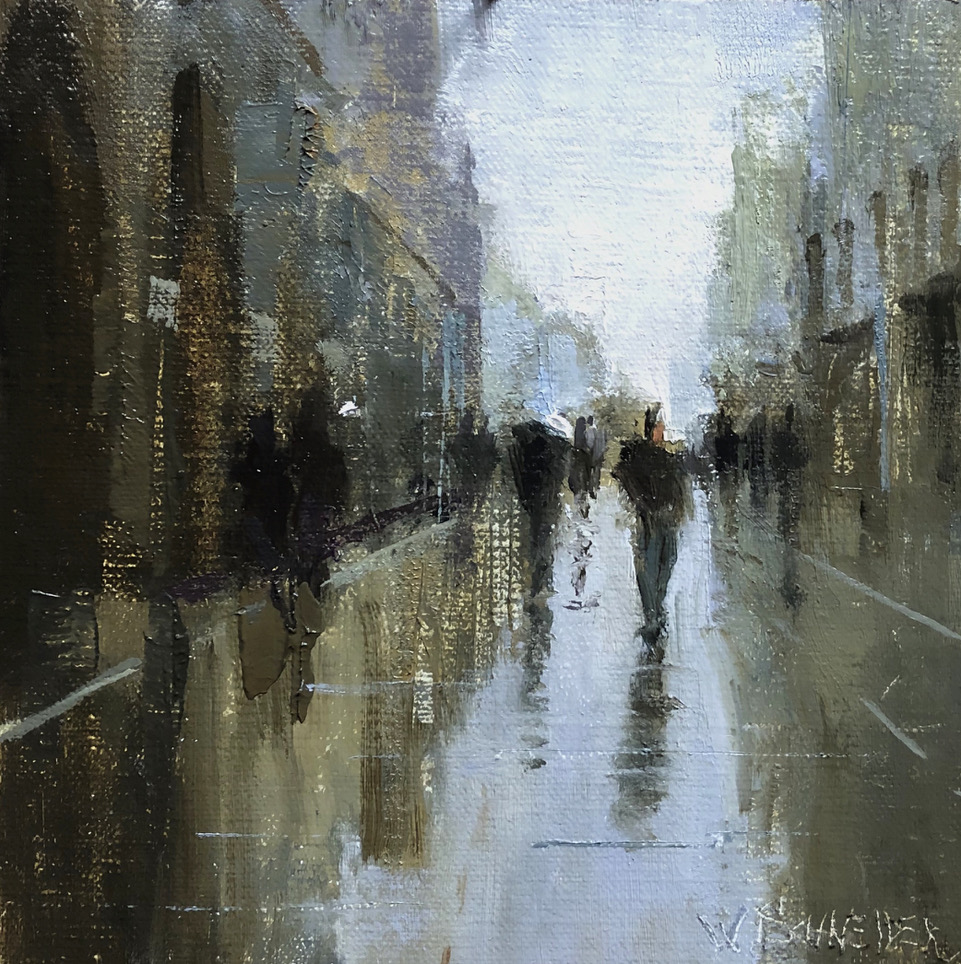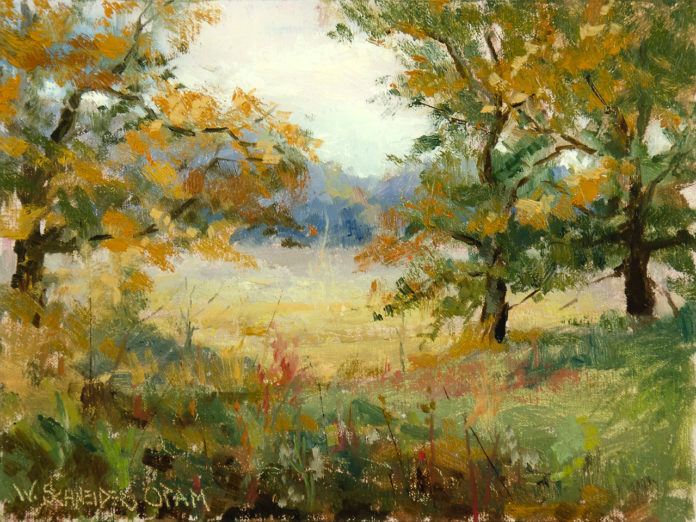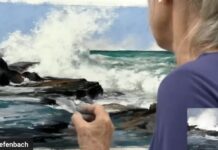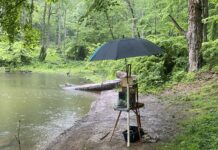William Schneider shares the surprising and unusual methods he uses for creating effective values, edges, marks, and more. (Schneider also teaches his pastel and oil painting techniques in a variety of art workshops from PaintTube.tv.)
1. Anything Goes
I use a number of tools in addition to brushes and painting knives. Seeing the work of Jeremy Mann opened my eyes to the mark-making possibilities of a broad range of tools: ink brayers, squeegees, and the Catalyst Mini Blade have become a routine part of my painting process.
Once the door was opened, I realized that almost anything can be used to apply (or remove) paint. Each tool leaves characteristic marks. So now I also use a ruler, popsicle sticks, a putty knife, Q-tips, and feathers. One of my go-to methods to break up or soften edges is to scratch across them with the handle of a brush. I also sometimes spray mineral spirits on a piece or splatter liquid paint on the surface.
I’ve found that once I have an idea where I’m going (particularly with edges) there is almost an infinite variety of methods to get there!
2. Broken Strokes for Different Folks
I love the broken-stroke approach of Nicolai Fechin. At first glance, it almost looks like he threw paint at the canvas and it miraculously landed in just the right spots. In reality, he sometimes worked on his pieces over weeks or months; you can clearly see strokes applied over dried paint. I developed a method to get a similar look in an alla prima setting.
To do this I use untoned, medium texture linen (Claessens 15), and paint straight from the tube, with no medium or mineral spirits to make it soupy. I hold the brush lightly and parallel, (not perpendicular) to the surface and use the flat of a half-inch brush (not the edge). This lets the paint come off the brush in a skipping manner without filling in the tooth of the canvas. I want the initial drawing to look almost pixelated. The painting looks loose and indefinite right from the beginning. (Paintings tend to get tighter the more you work on them.)
Editor’s Note: After extensive study and experimentation, Schneider has “broken the Fechin Code” and can reveal the unique system by which Fechin created his amazing paintings. Learn how to paint like Fechin here.
3. Harmonies for Here and There
Sometimes I borrow harmonies. For example, on a drizzly, misty day I looked out the back door at the beautiful cool grays of the wet landscape behind my studio. On a scrap of linen, I mixed up swatches of those colors. Later I applied that harmony to a composed cityscape; the result was the painting “April Shower.”

4. It’s Okay, He’s An Artist
The instructors at the American Academy of Art in Chicago drummed into me that I had to squint at my subject. Squinting simplifies values, making it easier to see the shapes of light, mid, and darks. It also makes it easier to see the hierarchy of edges. If I gradually close my eyes, the last edge that I can clearly see is the sharpest edge. While squinting, I can compare all other edges to that sharpest edge.
My painting needs to have the full range of edges – razor sharp to completely lost. A painting with too many hard edges looks flat, brittle, and amateurish…not the look I’m after!
By the way, this is how Sargent and Zorn painted, as well as modern masters like Richard Schmid and Dan Gerhartz. This habit has become automatic. Sometimes my wife has to remind me, “Stop squinting at the waitress!”
***
Connect with William Schneider at www.schneiderart.com.
For More Advice for Artists:
And browse more free articles and advice for artists here at OutdoorPainter.com




